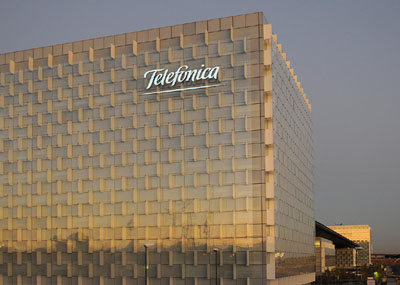Massive MIMO is often mentioned as a key 5G technology, but could it also be exploited in currently standardized LTE networks? The ZTE-Telefónica trials that were initiated in October 2016 shows that this is indeed possible. The press release from late last year describes the first results. For example, the trial showed improvements in network capacity and cell-edge data rates of up to six times, compared to traditional LTE.
The Massive MIMO blog has talked with Javier Lorca Hernando at Telefónica to get further details. The trials were carried out at the Telefónica headquarters in Madrid. A base station with 128 antenna ports was deployed at the rooftop of one of their buildings and the users were located in one floor of the central building, approximately 100 m from the base station. The users basically had cell-edge conditions, due to the metallized glass and multiple metallic constructions surrounding them.

The uplink and downlink data transmissions were carried out in the 2.6 GHz band. Typical Massive MIMO time-division duplex (TDD) operation was considered, where the uplink detection and downlink precoding is based on uplink pilots and channel reciprocity. The existing LTE sounding reference signals (SRSs) were used as uplink pilots. The reciprocity-based precoding was implemented by using LTE’s transmission mode 8 (TM8), which supports any type of precoding. Downlink pilots were used for link adaptation and demodulation purposes.
It is great to see that Massive MIMO can be also implemented in LTE systems. In this trial, the users were static and relatively few, but it will be exciting to see if the existing LTE reference signals will also enable Massive MIMO communications for a multitude of mobile users!
Update: ZTE has carried out similar experiments in cooperation with Smartfren in Indonesia. Additional field trials are mentioned in the comments to this post.

Similar test performed by Vodafone and Huawei in Newbury
http://www.vodafone.com/content/index/what/technology-blog/massive-mimo.html
Thank you for posting the link! It is interesting to see that many operators are evaluating the Massive MIMO technology.
However, it is not clear from the Vodafone blog post if their trial was compatible with LTE (as the Telefonica trial was). It is also unclear if they tested “true” reciprocity-based Massive MIMO, or the inferior codebook-based approach that is normally called “full dimensional beamforming” (this term is mentioned in the text).
You’re right, the press release it is not clear. The trial was very similar to ZTE trial, this means TM8, TDD, with UL SRS and UL-DL reciprocity, so LTE compatible.
I think there is still a little bit confusion in the terminology on Massive MIMO….
We in Telefonica O2 also conducted, though never went public, multi-user stationary Massive MIMO trials in TDD B40 using LTE reference signal & reciprocity. We observed similar results, 5-6 fold capacity gain compared to 8×8 system.
I believe it is the LTE reference signal, channel reciprocity and calibration scheme that enable TDD and FDD Massive MIMO. However, the TM9 in LTE release 10 has 8 layers. So this means when applying Massive MIMO for LTE, the maximum number of UEs that can be served simultaneously is 8? Not 16 or 24? Am I wrong?
The maximum possible layers in 5G is 8, right? Does it mean that the maximum capacity gain is possible using 8 layer transmission irrespective of the number of antennas in the system? How does the capacity gain differ in 8 layer 64T64R and 128T128R system?
I think that 5G supports 8 layers to a single user or up to 12 layers when using multi-user MIMO to transmit to multiple users. It is the latter that is normally called Massive MIMO.
The capacity gain of going from 64 to 128 antennas depends strongly on the propagation scenario and implementation. One can get a 3 dB SNR improvement for every user, but also improve the interference suppression capability.
Some real measurement results are presented in this blog post: http://ma-mimo.ellintech.se/2019/04/26/the-role-of-massive-mimo-in-5g-deployments/
Hi, Professor Bjornson.
If I truly understood the power control algorithms designed for massive MIMO, we write the algorithms in a coherence block and it seems that we should update the power control coefficients in each coherence block because of the CSI variations but on the other hand we know the power control coefficients only depend on large scale fading and it is not necessary to update them in each coherence block.
Does really need to run a power control algorithm in each coherence block?
If not, after how many coherence blocks should the algorithm be run?
From Section 7.1 in my book: “The channel hardening makes power allocation different in Massive MIMO than in single-antenna systems. There is no need to adapt the transmit powers to small-scale fading variations, but only to the large-scale fading characteristics.”
Hence, power control algorithms for Massive MIMO are designed so one can apply them once and then use the result as long as the statistics (large-scale fading coefficients) remain the same. How often does the statistics change? That is hard to answer because it depends on the mobility and how often the scheduling changes – if another set of users are served, then the statistics are changing.